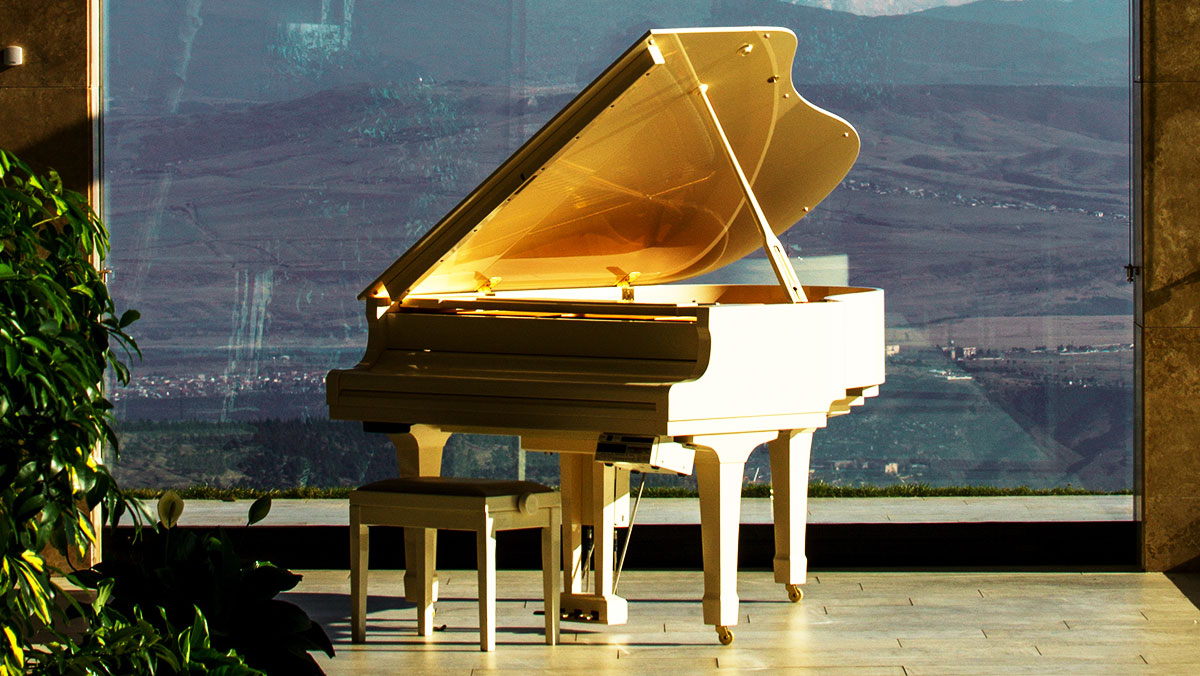
Rolex, Rolls-Royce, or Louis Vuitton – asking random people on the street for the first luxury brand names that come to mind, these three are probably in the top 10. And even segments like champagne, diamonds, or sportscars might come up – mentioned by those not that familiar with the lifestyles of the rich and famous. Whatever may come to mind, luxurious goods or brands are pretty well-positioned in our minds. Rare and expensive. Quality, aesthetics, or rarity go along with a considerable premium on the price tag.
Breakfast at Tiffany’s anyone?
If you are thinking Blue Box Café, 5th Avenue, and Pantone 1837, you might be one of the lucky ones who did get a reservation at Tiffany’s New York flagship store. And as much as the distinct color turquoise defines the upscale brand, we are still wondering which sounds come to mind. Not mentioning the number of songs written about the exclusive store, no sound, music, or voice come close to the visual appearance. In today’s multiverse and metaverse, pretty bold; but maybe not the wisest idea.
But Tiffany is not the only premium brand on mute. Taking a look at the most prestigious automotive brands, the manufacturers of these exclusive luxurious vehicles actually do spend a lot of time on sound. For the product itself, of course. From the distinctive roar of the exhaust system to the interior sound of the car. Even the sound of the turn signal is carefully curated. In the case of Bentley Motorcars, the Sound Engineer and founder of Radium Agency, Andrew Diey, went to an antique store to record old clock sounds to compliment the elegance of the cars’ understatement. Way to go for sophisticated sounds. Sadly, the same brand presents itself with five different sound logos in its videos on YouTube. Not that classy.
Why do brands carefully invest in their product and quite frankly ignore the touchpoints of their own brand in the digital world? It’s like decanting a 1961 Petrus to play “wine pong”. Same wine. Different taste? Maybe not. But a very different experience. And isn’t that what luxury is all about?
Time is the most valuable thing man can spend
Why else should people pay an easy USD10.000 for a Rolex timepiece, when a simple supermarket wristwatch will tell the time just as accurately for only USD10. Does a silver-plated writing instrument from German manufacturer Mont Blanc really optimize your handwriting? Buyers are willing to bet at least USD1.500 it will. Or do they?
It’s all about the experience and the emotion we create. For others and for ourselves. At least the price premium we are willing to pay for luxurious goods distinguishes us from those who spend the money somewhere else or simply don’t have it.
Why do luxurious brands pay so little attention to sonic branding then? With the diversification of brands in every corner of peoples’ (digital) lives, shouldn’t people hear and therewith recognize luxury? Even better – luxurious brands? Why is it, that we can see, feel, sometimes taste, and smell but rarely hear the premium of brands? What is the sound of luxury?
That sound is crystal clear
The fine merchants of Harrod’s in London approached this subject and took a bet on “aural wallpapers”, which are used in every department to welcome the potential buyers. These wallpapers are in fact soundscapes, which were specially programmed for certain departments to embrace the visitors. The sounds of the crystal and glass department include prerecorded sounds of the glassware itself for instance, which have proven to actually make potential buyers feel comfortable and hopefully luxurious. And if the sound won’t do the job, the price tags will. But again, with brick and mortar moving to the digital world, what does Harrod’s sound like online? Well, it doesn’t. A quick visit to the quite tasteful and exquisite webpage remains mute. The marketers of the London-based store consider that consumers in the digital world don’t need sound. Headphone generation anyone?
The psychology of sonic food
Back to the basics – the world of foods and drinks, to be exact. A sensory journey and a very soothing experience for those who indulge in the culinary highlights of the world. We smell and taste, we eat and drink, but do we listen? And you already guessed it – we really should! At least according to a study conducted by Oxford University professor Charles Spence, who specializes in experimental psychology. His research found out that certain music, or tones to be exact, influence our actual taste. If you like it sweet, consider listening to some high-pitched piano music or bells, to enhance the sweetness. The piano won’t turn your tasty Martini into milk with honey, but it adds to the experience.
We indulge with all of our senses. And audio not only enhances our experiences but is directly wired to our emotions. And it increases our anticipation. Just think of the “plop” sound, if you open a bottle of champagne. Or the espresso maker sounds while creating that perfect cappuccino.
For luxury brands, as well as in all other categories, sounds are essential for the full brand experience. Luxury sounds nowadays are still focused on the products themselves, which naturally represent the brand. And they do enhance the experience of the product – all senses act in tune. From opening a Bentley’s door to uncorking that bottle of Laurent-Perrier’s Grand Siècle – the sound we hear rises our expectations to match the experience. With our digital and real-world merging closer together every single day and brands becoming dynamic experiences for all demographics, especially luxury brands should embrace audio in their branding process. And maybe, we can even recognize Tiffany’s with our eyes closed.
Cover image source: Ramaz Bluashvili